
Is it pronounced “Ja”toba as in John, or “Ha”toba as in Havana? It’s hard to get a definitive answer, though you’ll find advocates on both sides of the issue. The wood was dubbed Brazilian cherry because it sort of resembles the deep red stain many cabinetmakers use to finish their “cherry” products. This isn’t to say that the wood isn’t beautiful. It runs from a rich orangish-brown to russet. It darkens with age and finishes to a deep reddish-brown, with occasional golden highlights. In addition to its good looks, the wood is quite hard, dense, stiff, and naturally resistant to rot and insect damage. This makes it a good choice for projects where strength and durability are important.
Where the wood comes from
Jatoba (Hymenaea courbaril) grows from southern Mexico through South America and the Caribbean. Most of the wood imported into the U.S. comes from Brazil. The trees are plentiful and can reach 125' with 6' diameter trunks. The first branches are often 50' or more up, providing straight, clear lumber. Jatoba is not listed on the CITES or IUCN Red List and is considered a species of least concern.
History in woodworking
Diese Geschichte stammt aus der February - March 2022-Ausgabe von Woodcraft Magazine.
Starten Sie Ihre 7-tägige kostenlose Testversion von Magzter GOLD, um auf Tausende kuratierte Premium-Storys sowie über 8.000 Zeitschriften und Zeitungen zuzugreifen.
Bereits Abonnent ? Anmelden
Diese Geschichte stammt aus der February - March 2022-Ausgabe von Woodcraft Magazine.
Starten Sie Ihre 7-tägige kostenlose Testversion von Magzter GOLD, um auf Tausende kuratierte Premium-Storys sowie über 8.000 Zeitschriften und Zeitungen zuzugreifen.
Bereits Abonnent? Anmelden
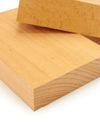
Beech
Plain looks, but a solid performer
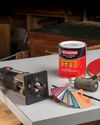
Working with PLASTIC LAMINATE
Adding a durable, smooth, and colorful surface to your work
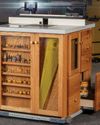
High-Tech ROUTER TABLE
A state-of-the-art shop essential

Albers-Inspired NESTING TABLES
A colorful array of Bauhaus utility

Desktop ORGANIZERS
Mini modules for your modern workspace
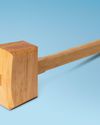
Joiner's MALLET
A hard-hitting shop hammer

Battery-backed biscuiting
DeWalt 20V Max XR Biscuit Joiner
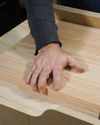
Crosscut SLED
A basic build of a crucial table saw accessory
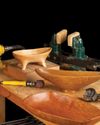
Power-carving BOWLS
Tools and techniques for sculpting

Library STEPS
Mitered box joints give rise to an updated classic